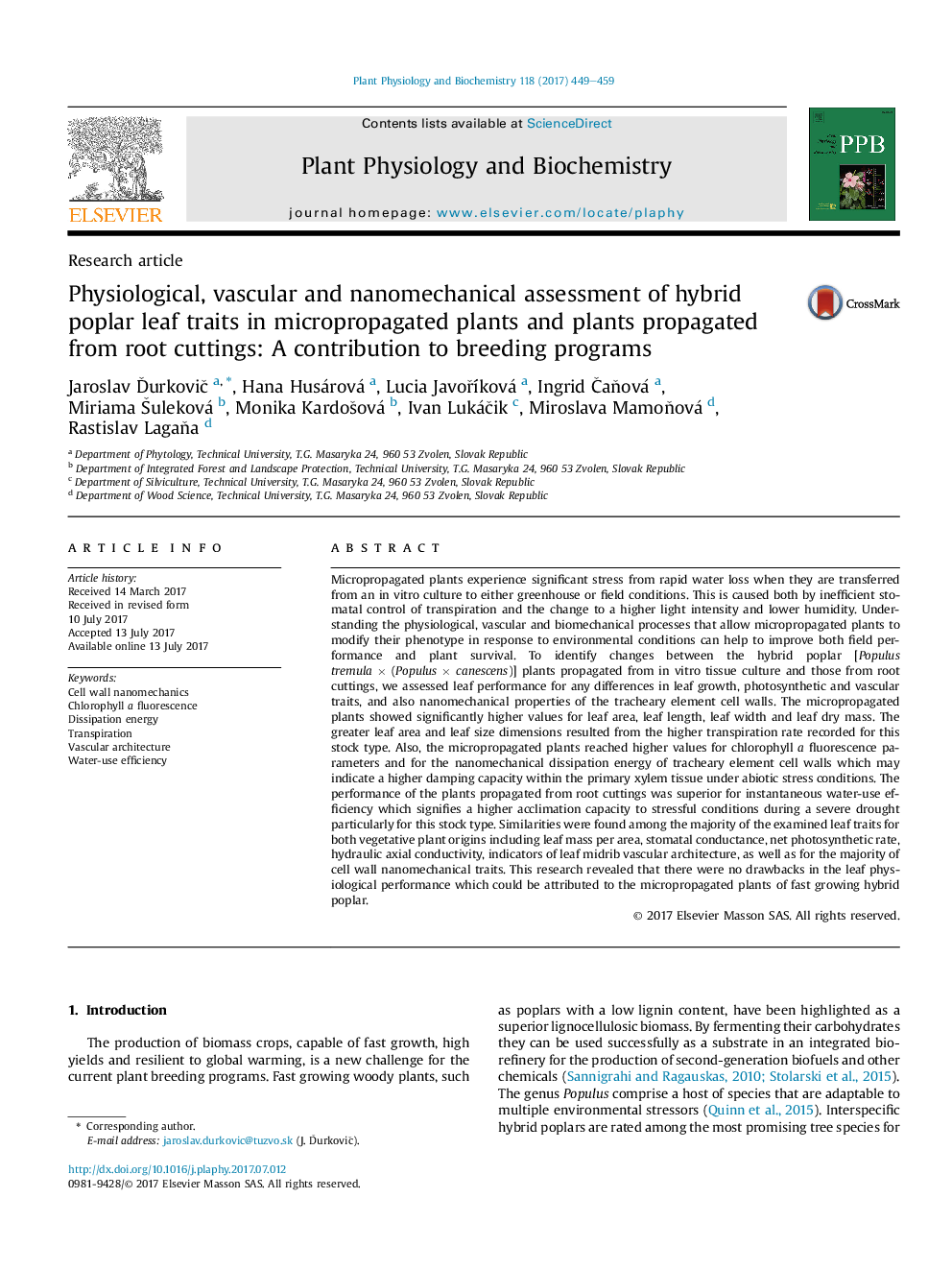| Article ID | Journal | Published Year | Pages | File Type |
|---|---|---|---|---|
| 5515462 | Plant Physiology and Biochemistry | 2017 | 11 Pages |
â¢The greater leaf area in the micropropagated plants was the result of a higher transpiration rate.â¢Nanomechanical mapping revealed a higher dissipation energy for the cell walls of the micropropagated plants.â¢In the sixth growing season following planting in the field, the micropropagated plants showed no drawbacks in leaf physiology.
Micropropagated plants experience significant stress from rapid water loss when they are transferred from an in vitro culture to either greenhouse or field conditions. This is caused both by inefficient stomatal control of transpiration and the change to a higher light intensity and lower humidity. Understanding the physiological, vascular and biomechanical processes that allow micropropagated plants to modify their phenotype in response to environmental conditions can help to improve both field performance and plant survival. To identify changes between the hybrid poplar [Populus tremula Ã (Populus Ã canescens)] plants propagated from in vitro tissue culture and those from root cuttings, we assessed leaf performance for any differences in leaf growth, photosynthetic and vascular traits, and also nanomechanical properties of the tracheary element cell walls. The micropropagated plants showed significantly higher values for leaf area, leaf length, leaf width and leaf dry mass. The greater leaf area and leaf size dimensions resulted from the higher transpiration rate recorded for this stock type. Also, the micropropagated plants reached higher values for chlorophyll a fluorescence parameters and for the nanomechanical dissipation energy of tracheary element cell walls which may indicate a higher damping capacity within the primary xylem tissue under abiotic stress conditions. The performance of the plants propagated from root cuttings was superior for instantaneous water-use efficiency which signifies a higher acclimation capacity to stressful conditions during a severe drought particularly for this stock type. Similarities were found among the majority of the examined leaf traits for both vegetative plant origins including leaf mass per area, stomatal conductance, net photosynthetic rate, hydraulic axial conductivity, indicators of leaf midrib vascular architecture, as well as for the majority of cell wall nanomechanical traits. This research revealed that there were no drawbacks in the leaf physiological performance which could be attributed to the micropropagated plants of fast growing hybrid poplar.
